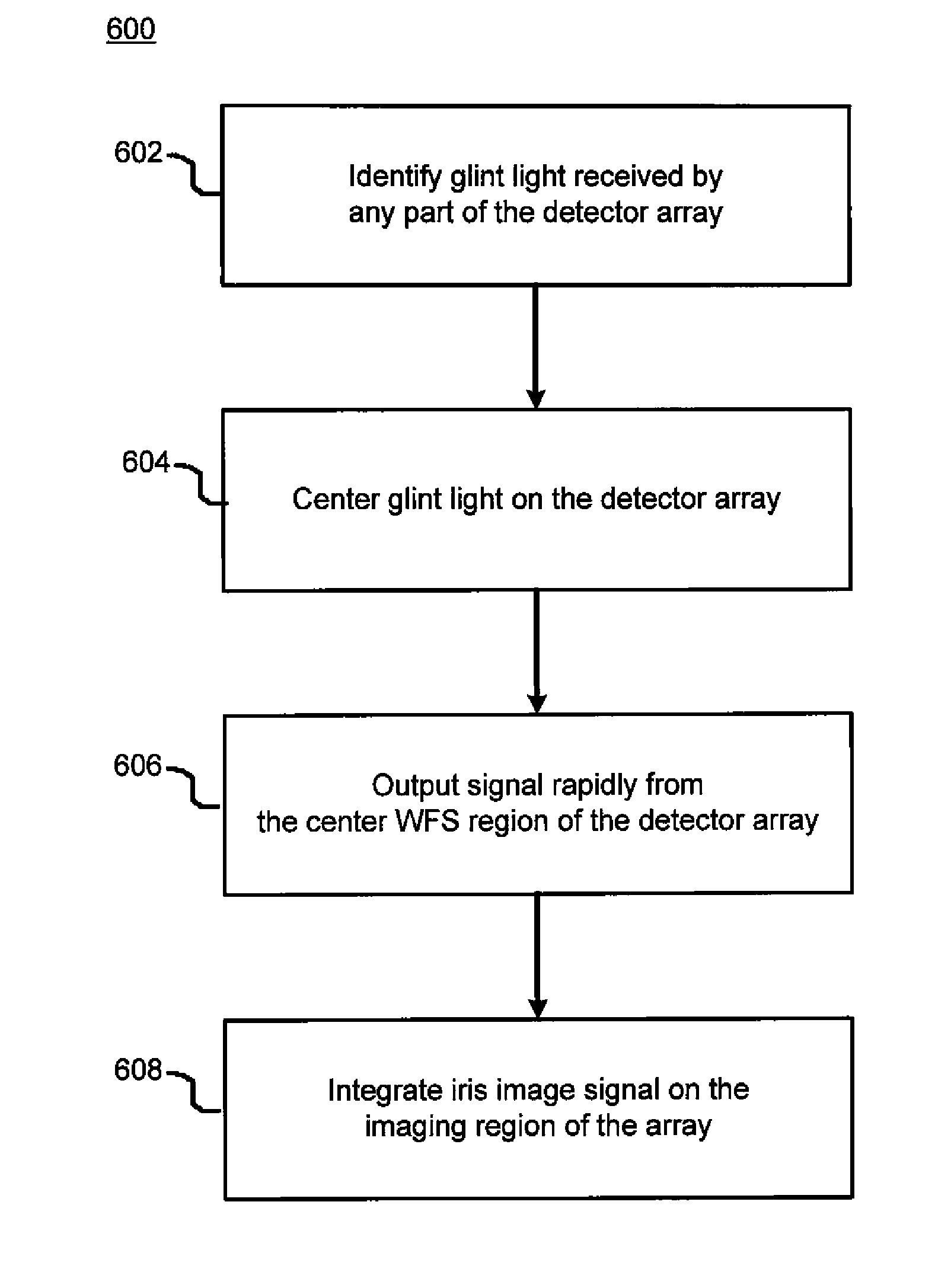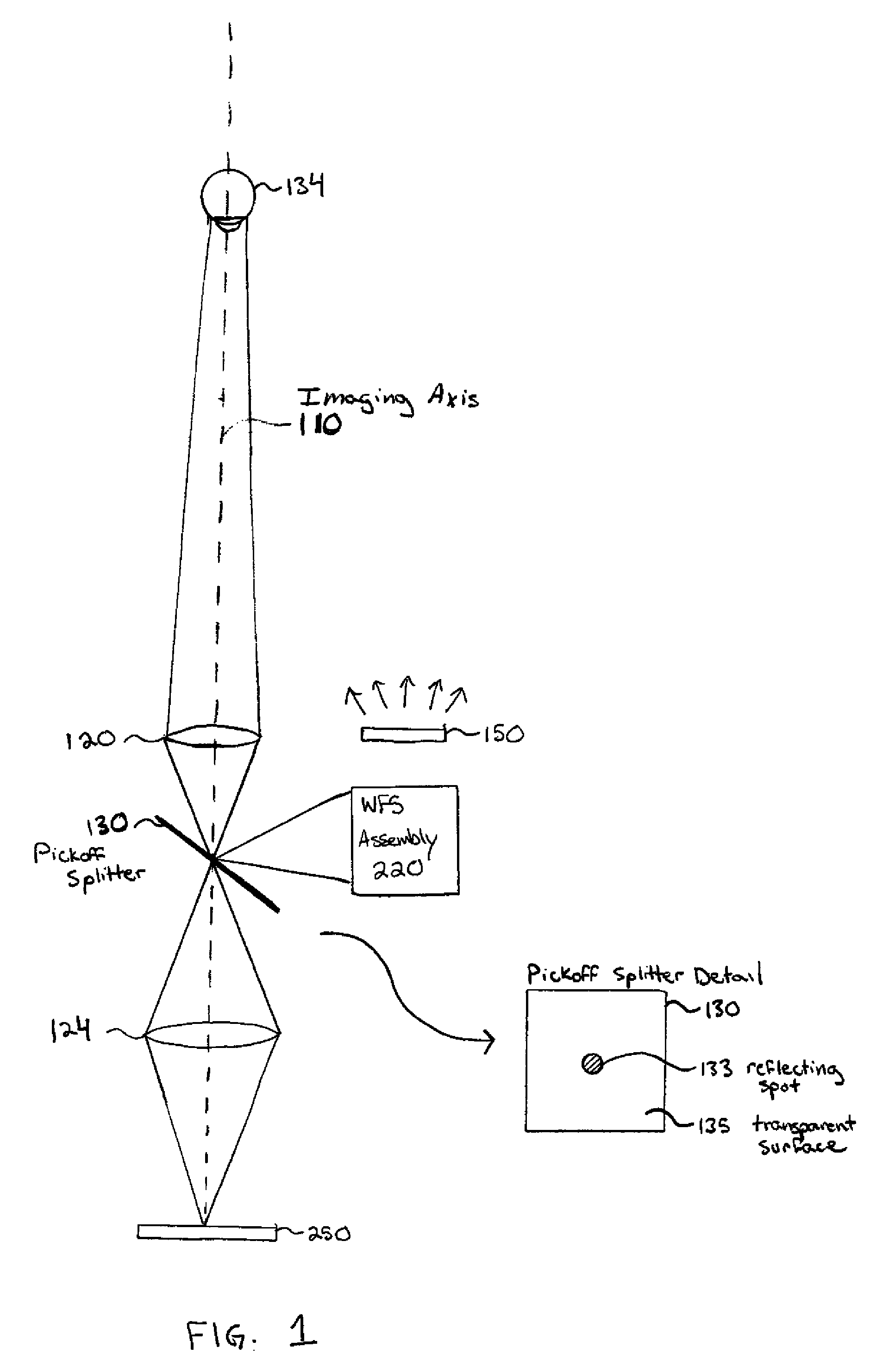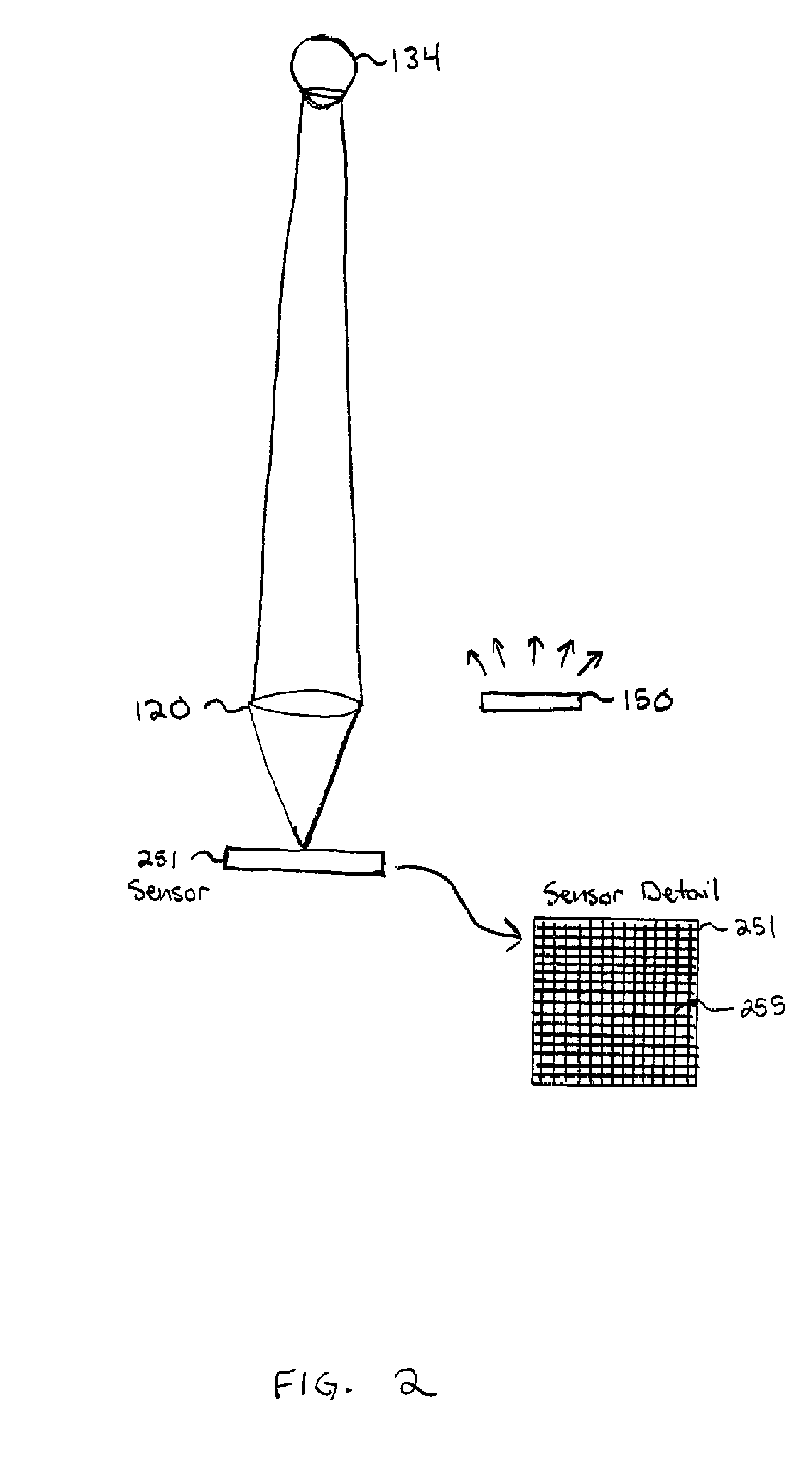Combined iris imager and wavefront sensor
a wavefront sensor and imager technology, applied in the field of iris imaging, can solve the problems of significant processing requirements, and achieve the effect of fast reading and maximum image quality
- Summary
- Abstract
- Description
- Claims
- Application Information
AI Technical Summary
Benefits of technology
Problems solved by technology
Method used
Image
Examples
Embodiment Construction
[0020]Traditionally, it has been thought that a large angle between the illumination direction and the optical axis of the iris imaging camera is necessary to improve the contrast of images. This was assumed to be due to the three-dimensional structure of the iris. However, experiments conducted by the inventors have shown that the iris image contrast is not significantly reduced by using on-axis or near on-axis illumination.
[0021]An advantage of on-axis or near on-axis illumination is that the camera and illuminator can be housed in a single package, which makes deployment of the system much easier and its use more convenient. A further benefit of on-axis or near on-axis illumination is that the glint from the iris illuminator source will be positioned within the eye pupil, and will not contaminate the area of the iris image available for coding.
[0022]As has been described in U.S. patent application Ser. No. 11 / 765,401, filed Jun. 19, 2007, entitled “Iris Imaging Using Reflection F...
PUM
 Login to View More
Login to View More Abstract
Description
Claims
Application Information
 Login to View More
Login to View More - R&D
- Intellectual Property
- Life Sciences
- Materials
- Tech Scout
- Unparalleled Data Quality
- Higher Quality Content
- 60% Fewer Hallucinations
Browse by: Latest US Patents, China's latest patents, Technical Efficacy Thesaurus, Application Domain, Technology Topic, Popular Technical Reports.
© 2025 PatSnap. All rights reserved.Legal|Privacy policy|Modern Slavery Act Transparency Statement|Sitemap|About US| Contact US: help@patsnap.com



